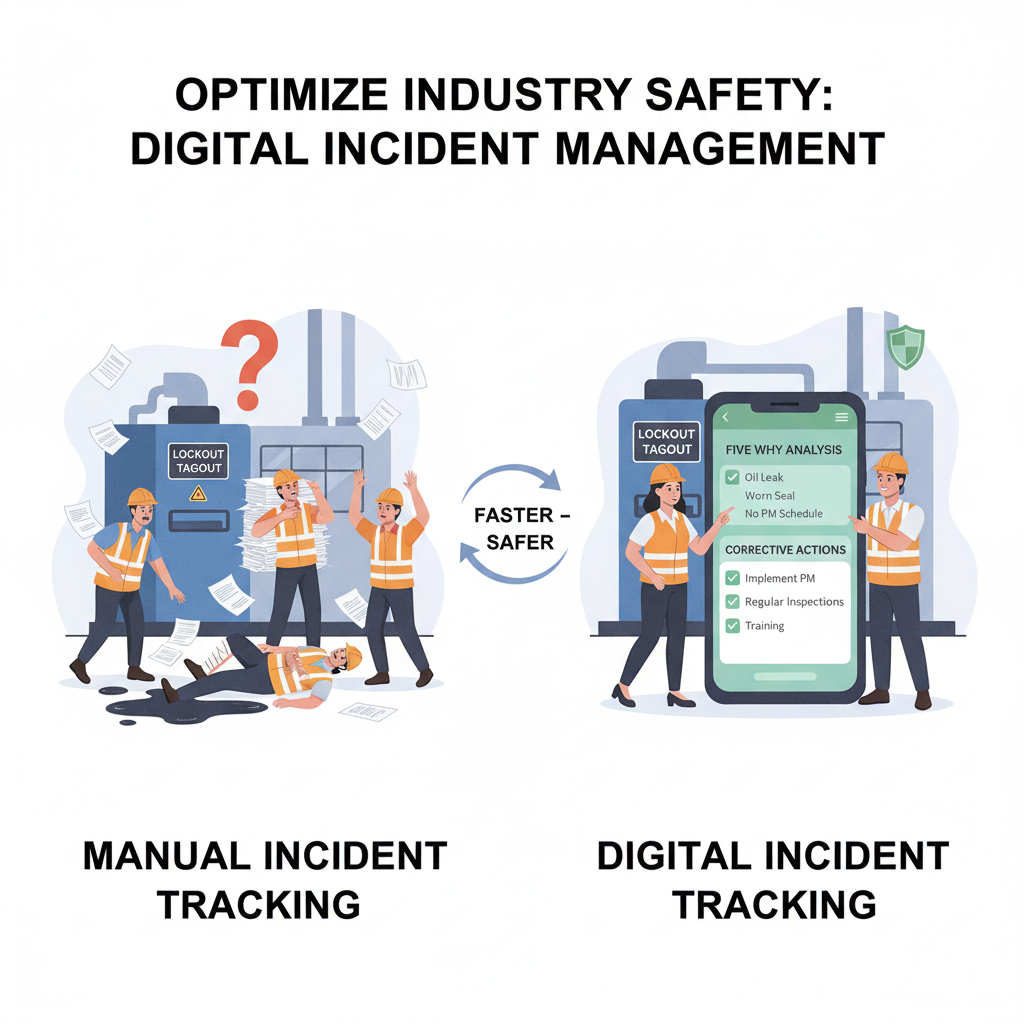
Digital Incident Management Software makes it easy to track and manage incident reports anytime. You can view the status and progress directly on the dashboard whenever and wherever you need. Compared to manual methods, the digital system is faster, saves a lot of time, and simplifies the approval process. With manual handling, it’s easy to lose documents or miss important information. Switching to a digital platform improves accuracy, allows quick access, and makes incident management more efficient.
Department Wise Incident Management Software: How It Helps Industry:
1. Production Department: Software logs and routes incidents, like equipment failures or safety issues, to the right personnel immediately. This quick response reduces unplanned production downtime, which can be costly.
Example: A lockout tagout machine might be locked due to some issue.
2. Operation Department: Incident management software for manufacturing and construction can track workplace safety incidents. It helps identify the root causes of accidents, such as why and when they occurred, allowing for corrective actions to prevent repeats.
3. Warehouse Department: The software enables warehouse staff to report and log incidents related to logistics, equipment, or inventory. This ensures problems are addressed quickly, keeping goods flowing smoothly from suppliers to customers.
4. Technical Department: It helps IT teams respond to and resolve system error and technical issues promptly. This reduces service disruptions and their associated costs. By reviewing incident data over time, IT teams can spot underlying issues and take proactive measures.
Five Why Analysis for Incident in Industry:
The Five Why Analysis is a straightforward yet effective tool used to find the root cause of an incident in the workplace. Instead of stopping at the immediate reason, this method digs deeper by repeatedly asking “Why?” until the main cause is identified.
For example, if a worker slips and falls in the factory:
Why did the worker fall? → There was oil on the floor.
Why was there oil on the floor? → A machine was leaking oil.
Why was the machine leaking? → The oil seal was worn out.
Why was the seal worn out? → It was not replaced during maintenance.
Why was it not replaced? → There was no proper preventive maintenance schedule.
Through this simple questioning, the root cause is found: lack of preventive maintenance.
By applying the Five Why Analysis and conducting thorough risk assessments, industries can understand what went wrong, identify potential hazards, and take corrective actions to prevent similar incidents in the future, improving safety and operational efficiency.
Root Cause:
Lack of a preventive maintenance program for machines, leading to equipment leaks, unsafe floor conditions, and near-miss incidents.
Corrective Actions:
Develop and implement a preventive maintenance schedule for all equipment.
Conduct regular inspections to identify wear and tear early.
Provide training to maintenance and production teams on timely reporting of leaks.
Keep spill control materials available in high-risk areas.
Review maintenance performance monthly to ensure compliance.
Conclusion:
A Digital Incident Management System helps industries shift from manual paperwork to a faster, smarter, and safer way of handling incidents. It allows teams to report, track, and resolve safety issues, reducing delays and human errors. By adopting digital tools, manufacturing and industrial sites can foster a strong safety culture, ensure regulatory compliance, and protect both people and productivity.






